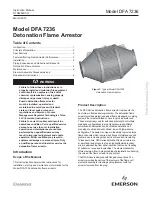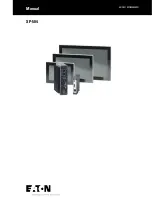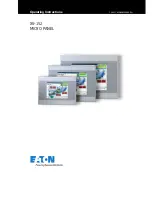
Figure 5.
Flange Pattern Tightening Sequence
1
5
9 13
72
68
64
60
56
52
48
44
40
36
32
28
24
20
16
12
8
4
70
66
62
58
54
50
46
42
38
34
30
26
22
18 14
10 6 2 71 67 63
59
55
51
47
43
39
35
31
27
23
19
15
11
7
3
69
17
21
25
29
33
37
41
45
49
53
57
61
65
Model DFA 7236
Facebook.com/EmersonAutomationSolutions
LinkedIn.com/company/emerson-automation-solutions
Twitter.com/emr_automation
D104263X012 © 2018 Emerson Process Management Regulator
Technologies, Inc. All rights reserved. 03/18.
The Emerson logo is a trademark and service mark of Emerson
Electric Co. All other marks are the property of their prospective owners.
Enardo™ is a mark owned by Regulator Technologies Tulsa, LLC, a
business of Emerson Automation Solutions.
The contents of this publication are presented for informational purposes
only, and while every effort has been made to ensure their accuracy,
they are not to be construed as warranties or guarantees, express or
implied, regarding the products or services described herein or their use
or applicability. We reserve the right to modify or improve the designs or
specifications of such products at any time without notice.
Emerson Process Management Regulator Technologies
Tulsa, LLC does not assume responsibility for the selection, use or
maintenance of any product. Responsibility for proper selection, use
and maintenance of any Emerson Process Management Regulator
Technologies Tulsa, LLC product remains solely with the purchaser.
North America
Only
Emerson Automation Solutions
Americas
McKinney, Texas 75070 USA
T +1 800 558 5853
+1 972 548 3574
Tulsa, OK 74146 USA
T +1 918 662 6161
Europe
Bologna 40013, Italy
T +39 051 419 0611
Asia Pacific
Singapore 128461, Singapore
T +65 6770 8337
Middle East and Africa
Dubai, United Arab Emirates
T +971 4 811 8100


























